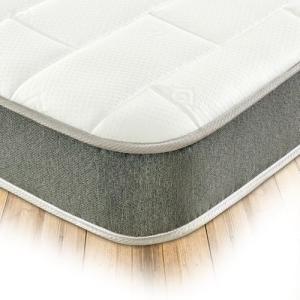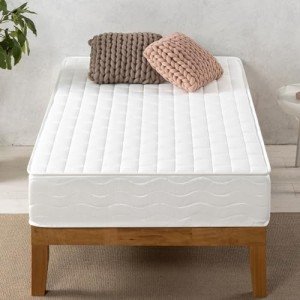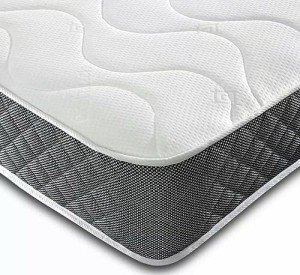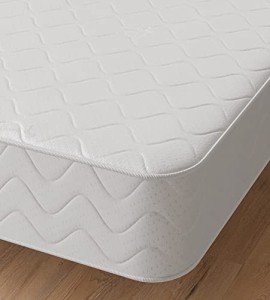Bunk beds are a popular choice for maximizing space in children's rooms, guest accommodations, and even dorm settings. When it comes to selecting the right mattress for bunk beds, two popular options often come to mind: plush foam mattresses and innerspring mattresses. Each type of mattress comes with its own set of characteristics, advantages, and considerations. This guide will explore both options to help consumers make an informed decision.
Understanding Bunk Bed Mattresses
Bunk bed mattresses are designed to fit standard bunk bed frames, which can have unique demands due to limited space and height constraints. A proper mattress for a bunk bed should be thin enough to fit safely within the frame but comfortable enough to promote a good night's sleep.
Types of Mattresses
-
Plush Foam Mattresses:
- Made from layers of foam, including memory foam and high-density foam.
- Known for their contouring ability and pressure relief.
- Available in various thicknesses, typically ranging from 5 to 8 inches for bunk beds.
-
Innerspring Mattresses:
- Constructed with a coil support system, often supplemented with various types of padding on top.
- Provide good bounce and support due to the coils.
- Generally thicker than foam mattresses, usually starting from 6 inches and going much thicker.
Comparison Table: Plush Foam vs. Innerspring Mattresses
| Features | Plush Foam Mattresses | Innerspring Mattresses |
|---|---|---|
| Comfort Level | Excellent pressure relief and contouring | Good support, may feel firmer |
| Durability | Generally durable, depending on foam quality | Long-lasting with proper care |
| Motion Transfer | Minimal motion transfer | More motion transfer due to coils |
| Noise | Silent, no squeaking | Can squeak with coil movement |
| Weight | Typically lighter | Heavier due to the metal coils |
| Allergies | Often hypoallergenic | Can retain allergens if not properly maintained |
| Price | Generally more affordable | Usually more expensive for higher quality |
| Heat Retention | Can trap heat, but many options have cooling features | Good airflow, less heat retention |
Choosing the Right Mattress for Bunk Beds
When selecting the ideal mattress for a bunk bed, several factors must be taken into consideration:
1. Safety First
- Thickness: Ensure the mattress fits securely in the bunk bed frame without the risk of falling out. A thickness of 6 to 8 inches is generally safe.
- Material Safety: Look for certifications such as CertiPUR-US for foam mattresses to ensure they are free from harmful chemicals.
2. Comfort Preferences
- Determine if a plush, contoured feel is preferred or a more traditional, bouncy feel.
- Test out different mattress types if possible to assess comfort.
3. Weight Limitations
- Some bunk beds have specific weight restrictions, especially on the top bunk. Consider the combined weight of the sleeper plus the mattress.
4. Longevity and Maintenance
- Foam mattresses resist sagging more than traditional innerspring mattresses but may need to be replaced every 7-10 years.
- Innerspring mattresses may require flipping or rotating and can have a lifespan of 8-12 years.
5. Budget
- Determine the budget beforehand as mattresses can vary significantly in price.
- Weigh the cost against the expected lifespan and comfort levels.
Frequently Asked Questions (FAQs)
Q1: Can a regular mattress be used on a bunk bed?
A: No, regular mattresses may not fit securely or safely within the confines of a bunk bed frame, and this could pose a safety risk.
Q2: How thick should a bunk bed mattress be?
A: Ideally, a bunk bed mattress should be between 6 to 8 inches thick for safety and comfort.
Q3: Are foam mattresses better for children?
A: Foam mattresses often provide better contouring and support, which can be beneficial for children still developing. However, personal preferences may vary.
Q4: How can I determine if a mattress is suitable for a bunk bed?
A: Always check the specific dimensions of both the mattress and the bunk bed frame. Additionally, check for safety certifications.
Q5: Is it safe to use an innerspring mattress on top bunk beds?
A: Yes, as long as the mattress meets the safety requirements for thickness and weight limits of the bunk bed.
Choosing the right mattress for a bunk bed is crucial for comfort, safety, and sleep quality. Plush foam and innerspring mattresses each have their own advantages and disadvantages, making them suitable for different users' needs. When considering the factors outlined above—safety, comfort preferences, weight limitations, maintenance, and budget—consumers can make an informed decision that enhances their sleeping experience. With the right mattress, bunk beds can offer a cozy, enjoyable, and safe sleeping environment for kids and adults alike.






